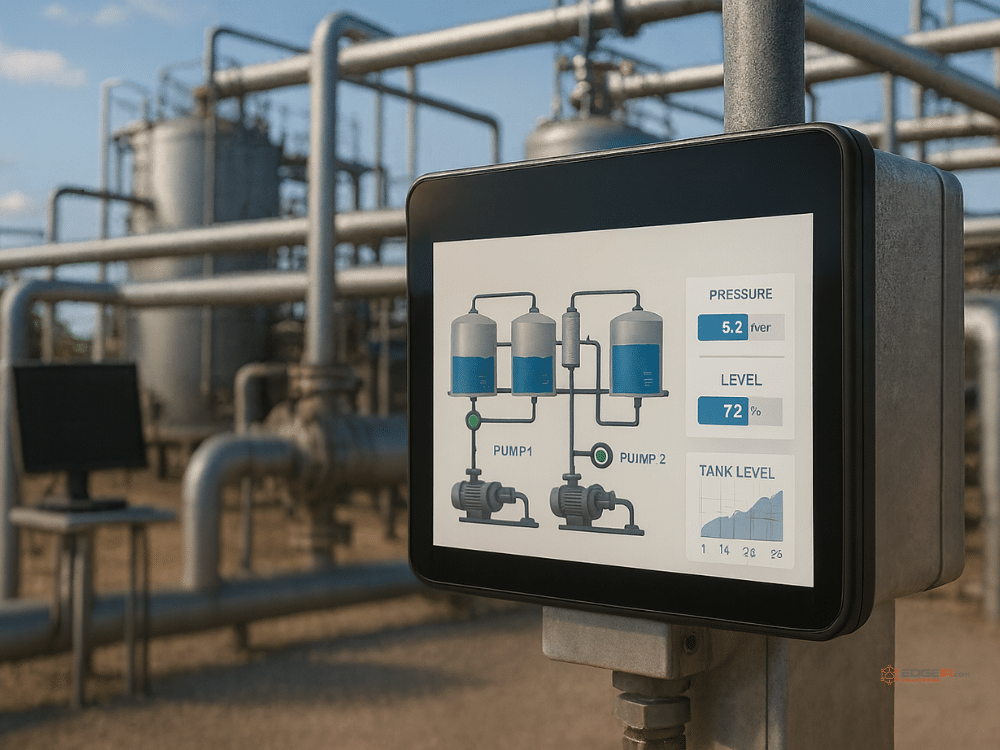In today’s fast-paced industrial landscape, integrating automation solutions is no longer just an option; it has become a necessity for small and medium-sized businesses (SMBs) aiming to remain competitive. The rise of AI and edge computing has opened the door for significant operational improvements, particularly in sectors such as Energy, Utilities, Oil & Gas, and Manufacturing. The recent collaboration between Barbara, a leading industrial edge AI platform provider, and Inductive Automation, the developer of Ignition SCADA, illustrates the transformative potential of these technologies. Together, they are enabling businesses to streamline their operations by facilitating the rapid deployment of SCADA applications at the industrial edge.
The Barbara Edge Orchestration Platform now supports the seamless deployment of Ignition SCADA solutions. This integration allows companies to reduce deployment times significantly while also minimizing manual intervention and maintenance costs. The advantages offered by this partnership are pragmatic and relevant. For SMBs, the primary benefits include plug-and-play capabilities for SCADA deployment, centralized management for fleet administration, embedded cybersecurity measures, and a scalable infrastructure suited for diverse operational environments.
Understanding the implications of this technology is essential for business leaders. First, reducing time-to-value is crucial. In an industry where operational efficiency can drastically affect the bottom line, quick deployment leads to immediate improvements in productivity. According to Peter Rawlins, VP of business development at Barbara, the collaboration aims to lower operational risks while facilitating easier scaling for industrial companies. The dual strengths of Ignition’s SCADA functionality combined with Barbara’s orchestration capabilities create a compelling value proposition that simplifies digital transformation.
As SMBs consider implementing these solutions, they should take a methodical approach. The first step is to assess current operational workflows. Identify areas that are overly manual or time-consuming, including data collection, reporting, and machinery monitoring. These pain points are where automated solutions can provide the most immediate benefits. Engaging in thorough planning will help ensure that the integration process aligns with business objectives.
The second step involves selecting the appropriate tools. The Barbara Edge Orchestration Platform eases the deployment of Ignition SCADA, making it an excellent candidate for companies looking to adopt SCADA applications quickly. In addition, utilizing platforms like Make or Zapier can enhance automation beyond SCADA by enabling integrations with CRM systems, inventory management, and other crucial business functions. This not only streamlines workflows but can also create a more cohesive operational environment.
Next, testing is essential. After choosing your automation tools and mapping out workflows, conduct a trial run to iron out any potential issues. This initial testing phase allows for troubleshooting and ensures that interoperability between different systems is effective. Keep the communication lines open with stakeholders during this process, as their feedback may yield actionable insights that can enhance the deployment.
Once testing is complete, move into the full-scale implementation phase. Train your team comprehensively on new systems and tools, focusing on how they can leverage these technologies to optimize workflows. A key point here is to highlight the importance of cybersecurity. As businesses increasingly shift to digital solutions, embedding robust security measures within your new systems is paramount to protect your operations and sensitive data.
Following implementation, continuous monitoring is vital. Regularly assess the performance of your automation solutions to identify areas for further improvement. Utilize dashboards and reporting features available through platforms like Ignition to gain insight into operational data, ensuring that all systems work harmoniously. If you observe any inefficiencies, it may be necessary to revisit your workflows or the tools you are using.
Lastly, consider the return on investment (ROI). With an effective automation strategy, businesses can expect not only cost savings through reduced manual labor and maintenance but also enhanced productivity, leading to increased revenue potential. An estimated 61% of Fortune 100 companies currently utilize Ignition within their operational framework. This statistic underscores the reliability and effectiveness of Ignition SCADA in meeting complex industrial needs.
For SMBs, the risks involved in adopting automation tools include the potential costs of implementation and the challenges of change management. However, the opportunities presented, such as increased efficiency, scalability, and reduced operational risk, far outweigh these risks when managed correctly.
The collaboration between Barbara and Inductive Automation is an exemplary case of how modern technologies can reshape industrial operations, allowing businesses to focus on strategic objectives rather than being bogged down by inefficiencies. Embracing such tools is not just about keeping pace with the competition; it’s about setting the stage for a more robust and agile future.
FlowMind AI Insight: Effective automation begins with a clear understanding of your workflow’s complexities and identifying specific pain points. By merging strategic planning with the right tools, SMB leaders can create adaptable and resilient operational structures that drive efficiency and growth in an increasingly digital world.
Original article: Read here
2025-08-28 10:00:00

